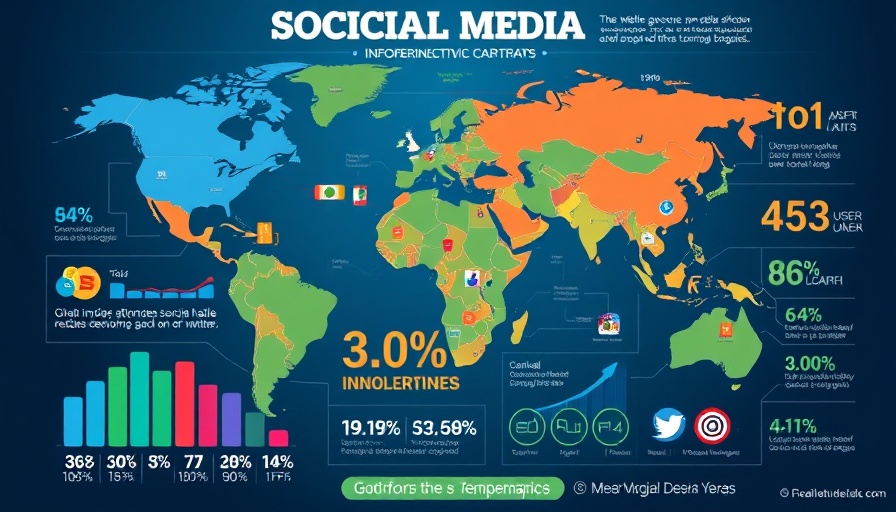
Unpacking Global Social Media Usage Trends in 2025
In a world where digital connectivity reigns supreme, the latest social media statistics reveal compelling insights into consumer behavior and platform popularity. According to research by Global WebIndex, as of February 2025, approximately 63.9% of the global population uses social media, averaging a daily usage of 2 hours and 21 minutes. This marks a significant trend as the integration of social networks into daily life continues to expand.
Who’s Engaging on Social Media and Why?
Despite the staggering number of users, trends indicate that social media platforms are adopted differently across demographics. For instance, younger users favor interactive entertainment and quick updates, while older generations lean towards news consumption and maintaining social connections. The need for regular engagement is evident as keeping in touch with friends and family is cited by over 50% of users as their primary motivation for using social media.
The Rise of Emerging Platforms
Recent figures show that platforms like Threads and Bluesky have seen dramatic growth, especially among users disenchanted with mainstream services like X (formerly Twitter). This shift illustrates the adaptability of users as they migrate towards platforms that cater to their interests, demonstrating the dynamic nature of social media's landscape.
Social Media Usage: A Comparative Analysis
The analysis of the latest data from Datareportal shows that over 5.07 billion people are now active on social networks, an increase of 259 million within just the past year. This growth, although slightly reduced compared to historical rates, underscores a continual integration of social media within global communication networks. Standing at 94.2%, the adoption rate of social media use by internet users globally highlights its pivotal role in shaping information consumption patterns.
Email Marketing Vs. Social Media Engagement
With social media’s potent influence on consumer behavior, marketers are urged to reevaluate their digital strategies. Brands are leveraging social media not just for outreach but to encourage interaction through targeted campaigns. In fact, a significant 50% of active social media users report visiting platforms to engage with brands. This behavioral shift highlights the necessity for marketers to create compelling content that resonates with their audience.
The Importance of Data-Driven Marketing Strategies
The necessity of understanding social media trends is not just a matter of keeping up; it informs strategic decision-making for CEOs, CMOs, and COOs looking to evolve with the changing dynamics of consumer engagement. As users become increasingly discerning, the onus is on brands to deliver authentic and personalized experiences.
Potential Risks and Challenges
Despite the upward trajectory in social media engagement, challenges abound. Issues related to data privacy, content management, and the authenticity of engagement metrics pose significant risks. Marketers must navigate these hurdles, balancing innovation with transparent practices that foster trust and enhance brand loyalty.
As the social media landscape evolves through 2025, staying informed about ongoing trends and consumer preferences will empower organizations. Companies must adapt their strategies in response to these insights to successfully engage their audiences and drive growth.
 Add Row
Add Row  Add
Add 




Write A Comment